NHS waiting lists reached an all-time high of 7 million people awaiting treatment in England in August, the highest since records began. Mounting elective care pressures have long been an issue, even before the pausing of elective care at the beginning of the 2020 COVID-19 pandemic. Indeed, hundreds of elective care procedures have been cancelled as a result of ageing and dangerous hospital infrastructure. Robert Naylor stated in 2017 that without significant investment, ‘the NHS estate will remain unfit for purpose and will continue to deteriorate’, diminishing future elective recovery plans. This issue is only likely to increase over the coming months, following the revelation that over 30 hospital buildings in England have roofs made out of reinforced autoclaved aerated concrete (RAAC), meaning that these hospital roofs may be perilously close to collapse. Interim and replacement capacity solutions, located away from the main hospital building, are required to maintain and even increase elective activity whilst keeping patients safe during the extensive refurbishment works that these roofs require.
The number of clinical incidents as a result of outdated hospital infrastructure in need of urgent refurbishment has tripled in the past 5 years, with incidents including an unconscious patient on a ventilator being trapped inside a lift for 35 minutes, a report by The Times has found. The report details the responses to freedom of information requests, illustrating the true extent of the devastating effects of the ‘crumbling NHS estate’ on patients, highlighting that existing tired infrastructure is unable to keep up with modern requirements.
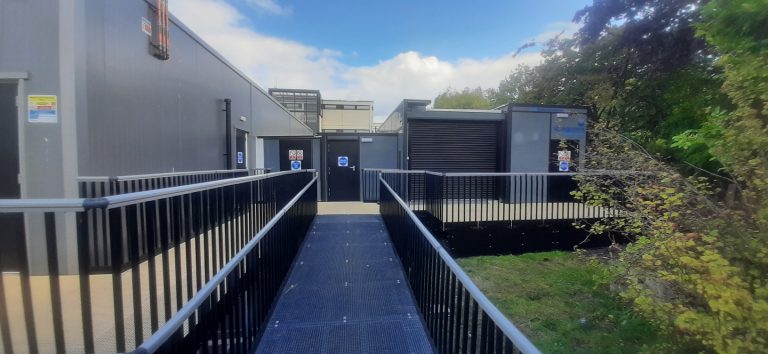
It is evident that alongside the growing care backlog, there is a significant maintenance backlog across healthcare providers and Health Boards that urgently needs addressing. Naylor states that the NHS estate covers a gross internal area of 26 million square metres, however around 1.5 million square meters of this is completely un-utilised as a result of infrastructure being too hazardous and outdated for modern requirements. In addition to this, a recent YouGov poll of 1000 private healthcare employees and 750 NHS employees has found that 50% of healthcare professionals believe that their workplace cannot house any additional staff due to a lack of availability of physical space. This therefore hinders recruitment efforts and reinforces Naylor’s statement that the NHS cannot most effectively address the growing backlog of care without the modernisation and refurbishment of infrastructure.
With pressures on the NHS at an all-time high, and maintenance costs from £5.5 billion to £9.2 billion over the past 5 years, the idea of building new, modernised, hospitals seems appealing. However, in reality this is a time consuming and expensive initiative that will not best address shorter-term issues. This is best demonstrated with the example of the Royal Liverpool Hospital, where redevelopment plans began in 2002 and are still yet to be completed.
A recent response by NHS England to a freedom of information request revealed that several hospitals across England have roofs built with RAAC, a lightweight and cheaper material that one hospital boss has labelled a ‘ticking time bomb’. The material has been used in over 30 buildings at 20 different hospitals in England and poses a colossal threat to staff and patients alike as roofs could collapse at any point.
In order to keep both patients and staff safe, some hospitals have chosen to install steel supports to reduce the risk of them collapsing, however this does not serve as a permanent solution. £685 million has been set aside to directly address the RAAC roof issue, and the New Hospital Programme will seek to introduce an additional 40 new hospitals that will gradually begin to replace the outdated infrastructure. In addition, interim solutions can be employed to maintain and increase capacity during periods of refurbishment. Mobile and modular healthcare facilities are an ideal solution to rapidly introduce to the hospital estate.
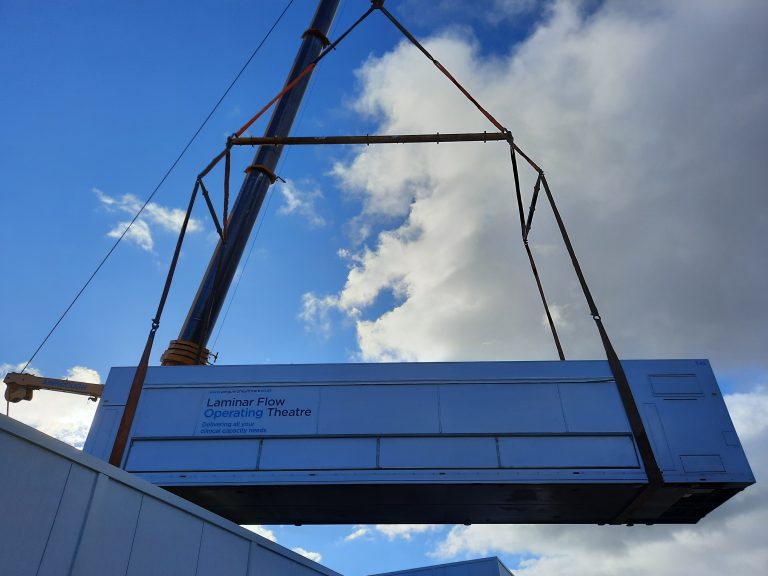
In situations where urgent capacity issues need addressing but the exiting hospital estate is not sufficient to accommodate this, flexible Healthcare Space solutions can be deployed. Modern Methods of Construction (MMC), such as those used with the installation of modular healthcare facilities, allow for the accelerated delivery of additional capacity solutions to extend the existing hospital estate. Mobile, modular and mixed-modality Healthcare Space solutions can be installed during periods of refurbishment or strained capacity, providing a cost-effective and sustainable alternative to addressing growing waiting lists and transforming patient care. Moreover, the introduction of modern technologies and up-to-date infrastructure facilitates recruitment drives, offering greater opportunities for the development of skills within a modern working environment.
Following calls from the Royal College of Surgeons in 2021 for the introduction of surgical hubs, modular operating rooms were installed in Newcastle and Roehampton to combat growing surgical backlogs. The rapid delivery of these Healthcare Space solutions extended the existing hospital estate, providing additional capacity and ensuring that the hospitals were best equipped to tackle their acute care waiting lists in a matter of months rather than years. Recent demands on capacity have increased the attractiveness of MMC facilities thanks to the nature of their accelerated delivery and the benefits that are associated with off-site construction, such as minimal site disruption and cost savings. What’s more, the use of more sustainable materials, such as steel and timber, enhance the flexible nature of facilities, ensuring that they can be best adapted to the current need, unlike traditional bricks-and-mortar NHS buildings, many of which have been in place since before the establishment of the Health Service in 1948.
Long associated with the terms ‘temporary’ and ‘emergency’, should the NHS look to effectively ‘build back better’ in the wake of the pandemic, it is time to start viewing flexible clinical infrastructure, and MMC, as sustainable and permanent means to rapidly improve the existing hospital estate, not only to increase and replace capacity but to improve patient outcomes and facilitate in recruitment drives.
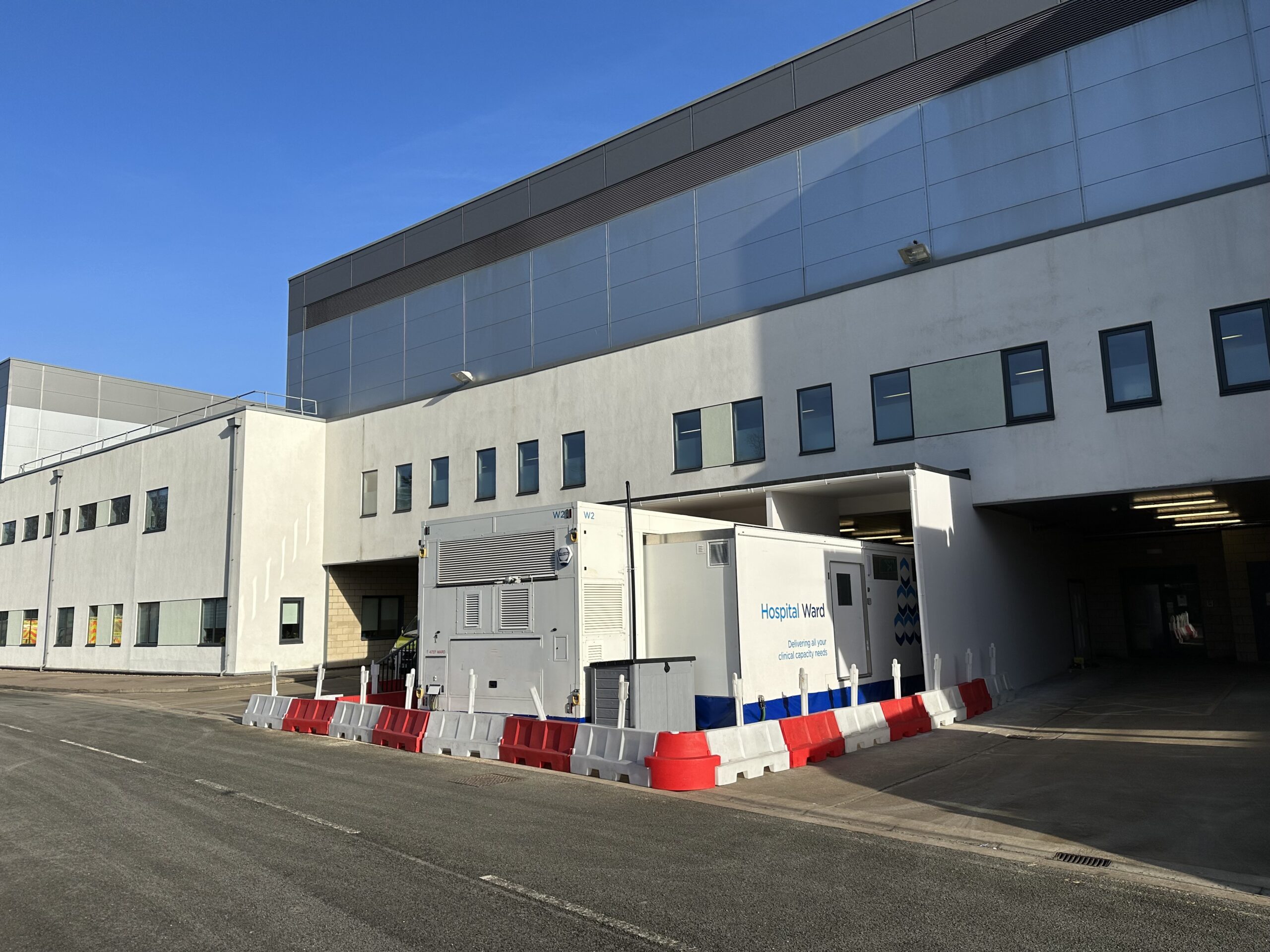
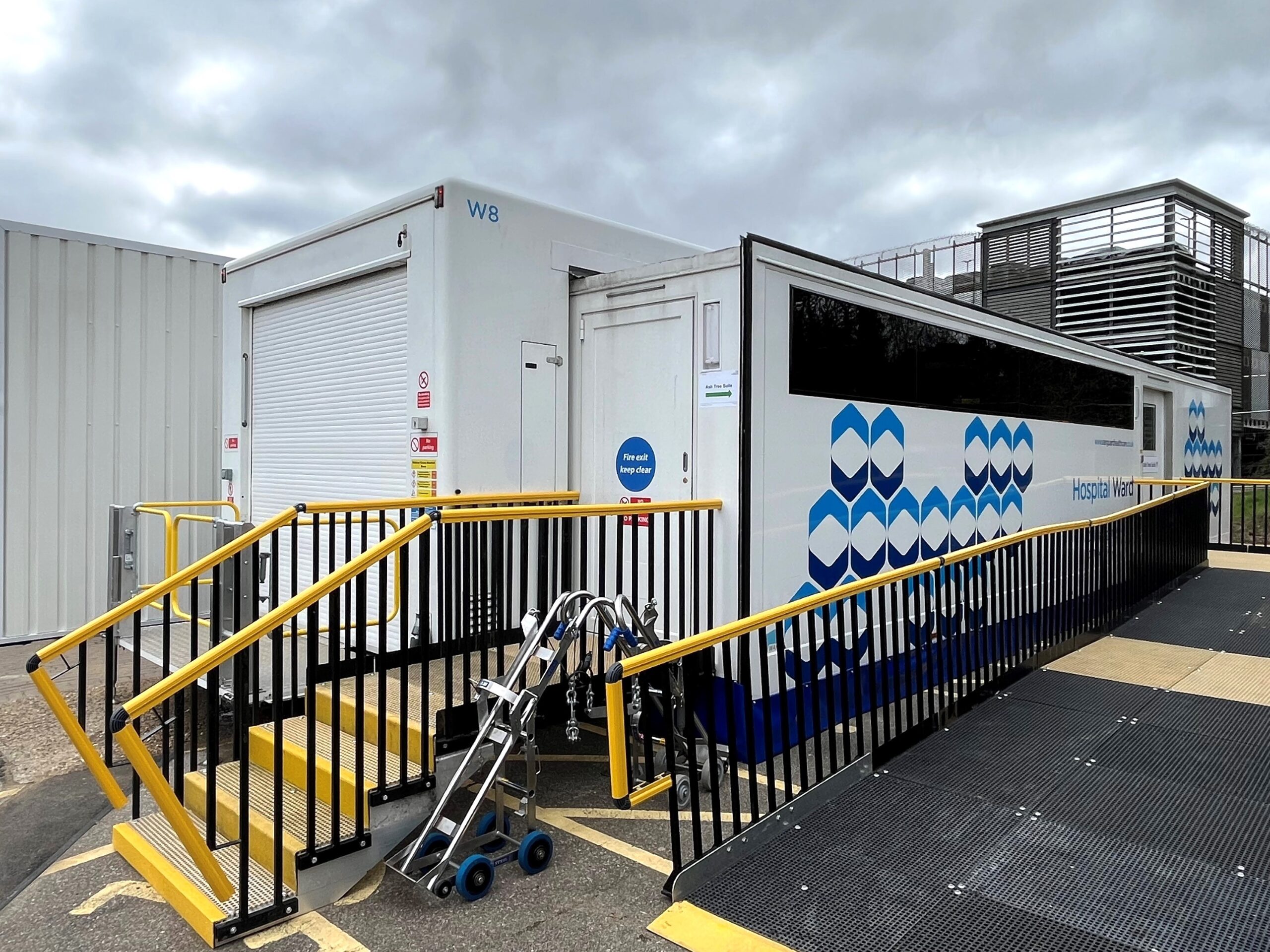
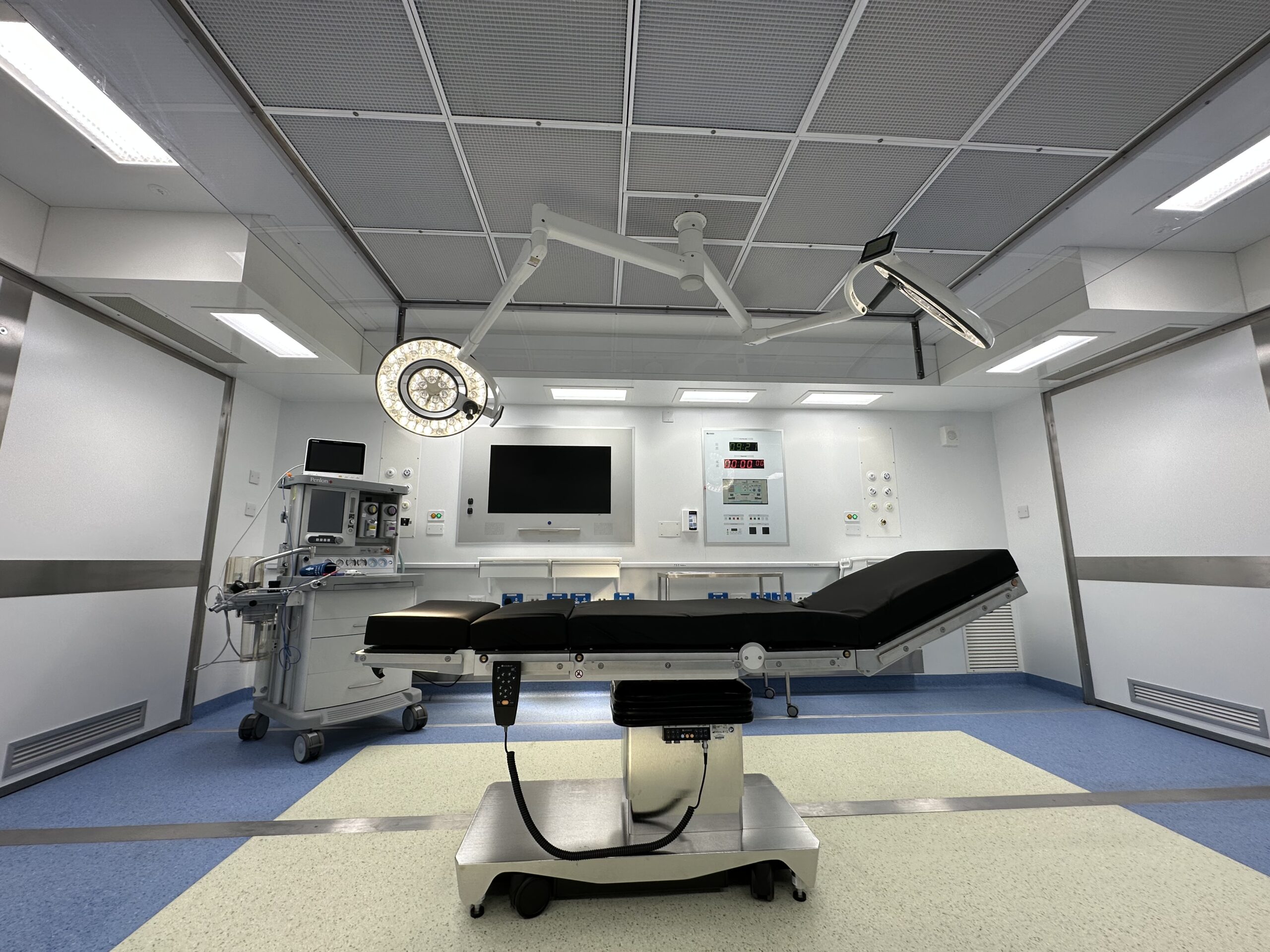
Q-bital Healthcare Solutions
Unit 1144 Regent Court, The Square, Gloucester Business Park, Gloucester, GL3 4AD
